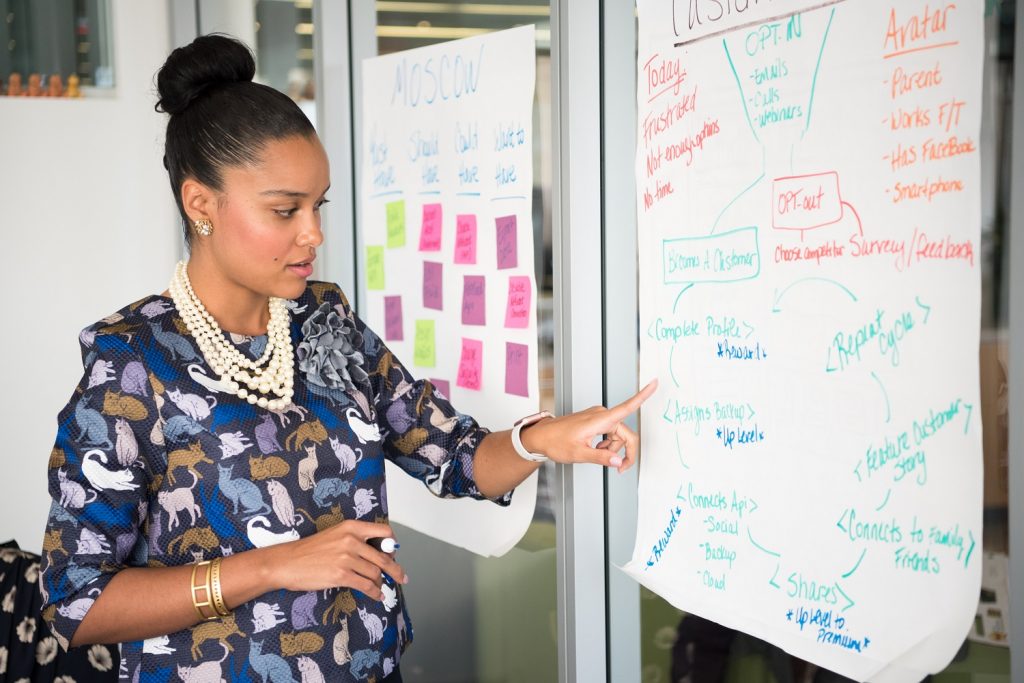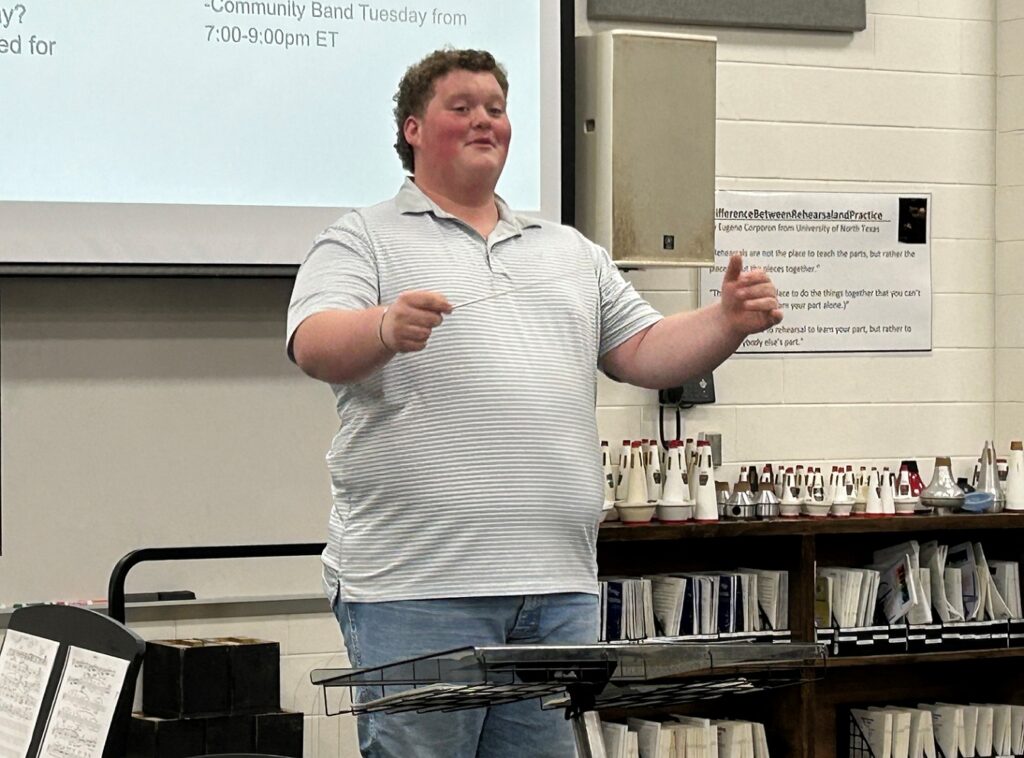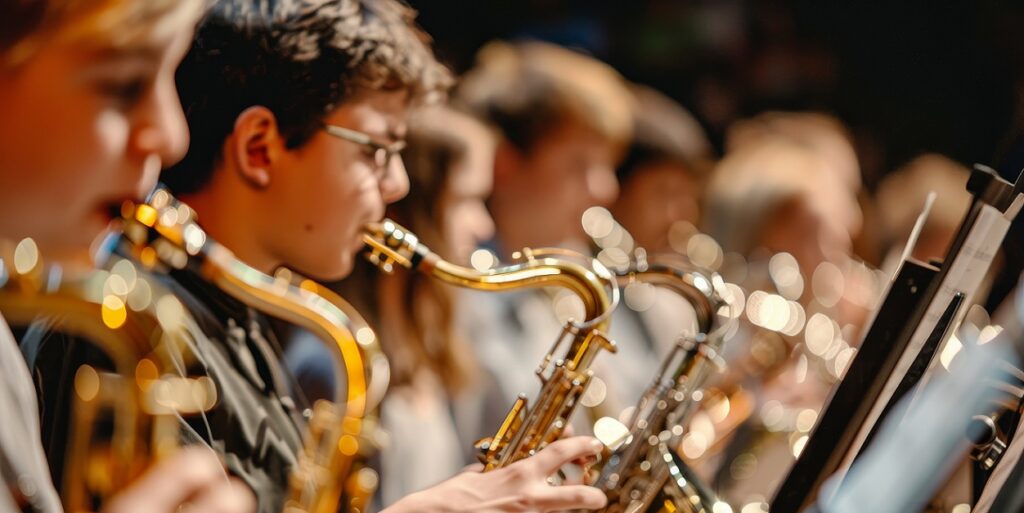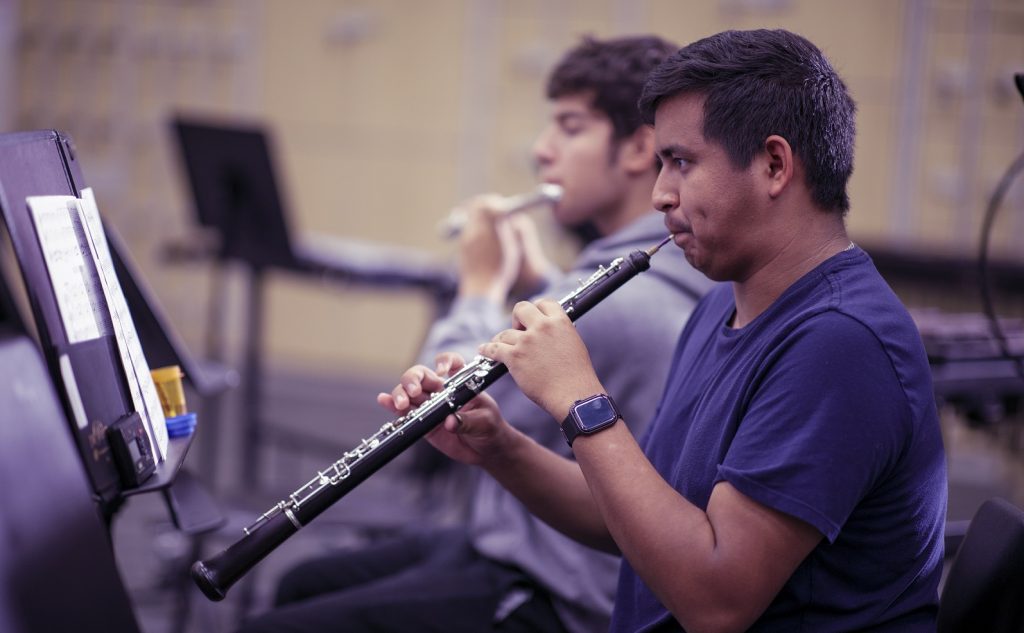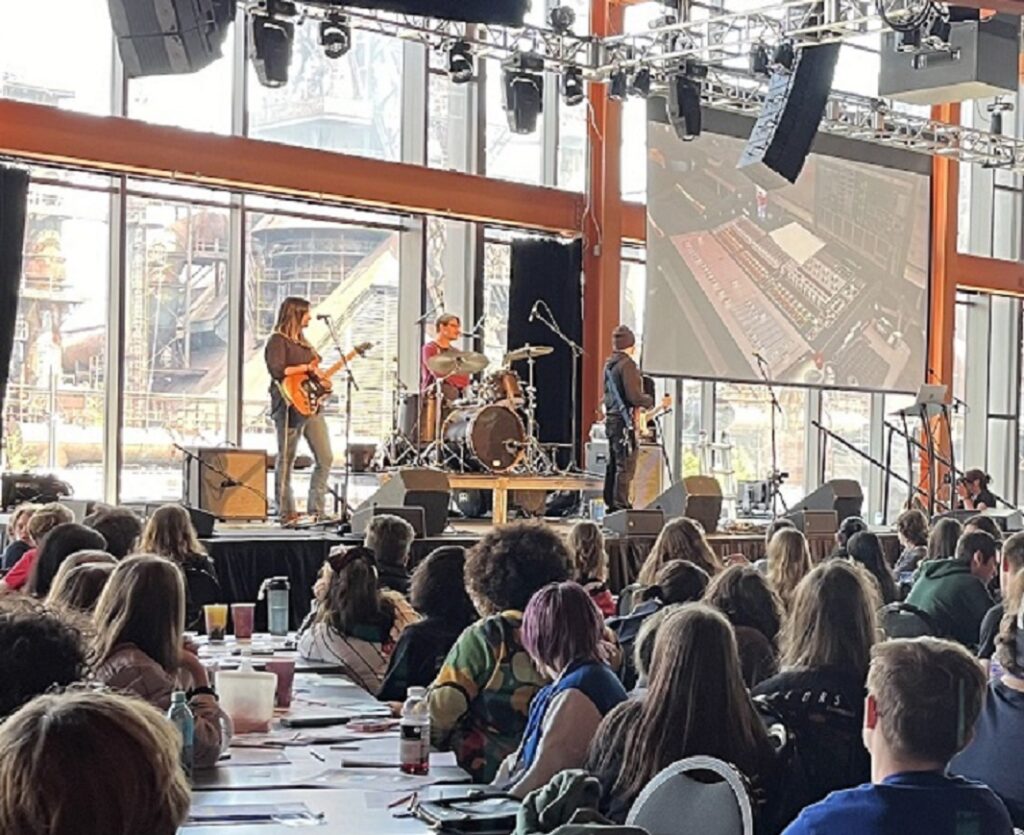Tagged Under:
How has COVID affected today’s students?
A look at the possible impact the pandemic had on music education for elementary, middle and high school students.
For school districts that chose to utilize distance education in 2020, pivotal in-person experiences were missed, such as rehearsals, concerts, field trips, recruiting and a general presence in the community. If you’re like me, memories of scrambling to get my entire curriculum online are quickly fading. At this point, coworkers remind me of the afternoons we spent coercing students to turn on their cameras to prove that they were actually drumming along to an activity. This conversation makes me realize that elementary schools only have two more years of “COVID students” — wow! Of course, middle and high schools have a longer road to travel, so let’s look at where the students impacted by distance education will be during the 2024-2025 academic year.
| 2024-2025 School Year | March 2020 | 2020-2021 School Year |
| 12th | 7th grade | 8th |
| 11th | 6th grade | 7th |
| 10th | 5th grade | 6th |
| 9th | 4th grade | 5th |
| 8th | 3rd grade | 4th |
| 7th | 2nd grade | 3rd |
| 6th | 1st grade | 2nd |
| 5th | Kinder | 1st |
| 4th | Pre-K | Kinder |
| 3rd | 3 years old | 4 years old |
| 2nd | 2 years old | 3 years old |
| 1st | 1 year old | 2 years old |
| Kinder | Birthyear | 1 year old |
This chart shows where next year’s students were in March of 2020 when most schools shut down as well as the following school year. Many approaches were taken with distance education, including different return dates, so it’s impossible to describe the impact on every American student, but this information can help you conclude how much of each school year was missed in your area.
My school district — Clark County in Nevada — participated in distance education from March 2020 to March 2021, returning in a hybrid model for volunteer students for the remainder of the 2020-2021 school year. My 4th and 5th graders at that time did not get my normal send off to middle school, and according to the chart, they will be freshmen and sophomores in high school in 2024-2025.

High Schoolers
Though I would love to focus on the elementary music teacher perspective, my interest in this topic takes me to high school. Recruiting and retention have been the hot topics since in-person learning has returned because the pre-COVID system worked so well. The transitions from elementary to middle school and middle school to high school have been a well-oiled machine of promoting the benefits of continuing your music education and the perks of being part of your musical family. Next year’s high school students missed these important hand-off years from school to school.
Look at the chart. Next year’s seniors were in 7th grade when schools shut down, and they missed the end of their middle school years, were recruited to join music classes during the online era and returned to in-person education as freshmen in high school. Their experience in online music classes may have stifled them from rejoining music in high school.
Next year’s sophomores missed the end of their 5th grade year and were recruited to start a brand-new instrument via Zoom in 6th grade, not experiencing a live rehearsal until 7th grade.
But it’s not all bad news.
Yes, I’m excited that in two years, elementary school students will not even know what COVID is. And in two years, high school freshmen will have had in-person music classes since 6th grade. These students will have more ensemble time during their formative years than the students older than them, which will hopefully positively impact their tuning, intonation and listening skills.
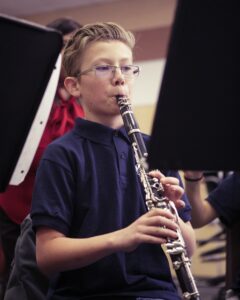
Middle School Students
Middle school students are in a gray area where they missed the middle chunk of elementary school, but they all had a full year of 5th grade before transitioning to middle school, resulting in a successful recruiting campaign to join a music ensemble. Of course, they missed a large chunk of elementary music curriculum but signing up for a music ensemble is more than half the battle when it comes to recruiting.
My current 5th graders missed the end of 1st grade and all of 2nd grade. Though that is a large deficit, they have received the most amount of preparation and recruiting out of any students since 2020 because the middle school band can again travel to perform at the elementary schools, demonstrating all the available fine arts options. As much as I want to comment on the social-emotional skills that still need to be polished, I don’t have a degree in psychology to back up my theories.

Elementary School Students
In 2024-2025, students entering 1st, 2nd and 3rd grades joined the public school system after in-person learning returned. Should they be absolutely normal? Probably. But it doesn’t take a Ph.D. to know that although these children weren’t in school, they were still raised in homes that were impacted by a global pandemic. My current kindergarteners have absolutely no fear walking up to my smart board and commanding it around like a giant iPad. I can only guess that increased screen times and access to phones and tablets are the root of this new efficiency. Instead of ridiculing, I can now ask students to perform tasks on the board that I wouldn’t have attempted five years ago.
The bottom of the chart shows that next year’s kindergarteners were born during the COVID quarantine. I have a coworker who gave birth twice during the COVID protocols in the hospitals — something she doesn’t recommend. Though her children were born with limited guests and strict contamination guidelines, their lives at home since have been quite the opposite. The following year gave her family more time to be at home with the babies, her in-laws a reason to stay in Vegas while they worked remotely, and my friend had a chance to be near her children more than if she was working in-person. This was not everyone’s experience, but it is a ray of positive hope that today’s youngest students might have received more facetime with their families during these early years than any generation before.
My daughter experienced a similar upbringing, where my wife and I were home for over a year, playing dolls and dressing up with her, making meals together, and generally living together in our house 24/7. When it was time for her to start kindergarten, saying goodbye at the gate was devastatingly rough as it was the longest time we had spent apart since birth.
———————————————————–
I encourage you to reflect on where your students were during distance education and ask yourself if there is a noticeable gap in their musicianship, emotional wellness or maturity. Just kidding, we already know that we were all affected by COVID. Give yourself some grace. If you’re able to let your pandemic memories fade, I am happy for you. I hope the new school year begins with tons of potential and happy music-making.
Top photo by Syda Productions / Adobe Stock










